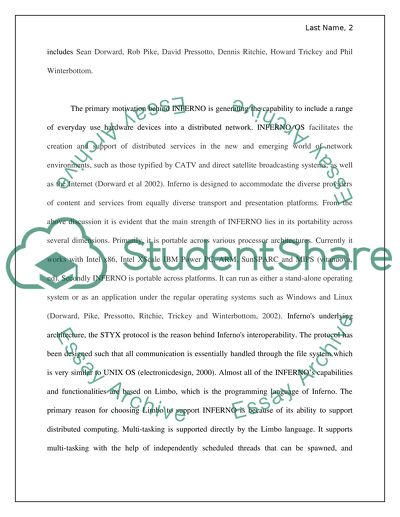Cite this document
(INFERNO Operating System Assignment Example | Topics and Well Written Essays - 1500 words, n.d.)
INFERNO Operating System Assignment Example | Topics and Well Written Essays - 1500 words. Retrieved from https://studentshare.org/information-technology/1507658-inforno-operating-system
INFERNO Operating System Assignment Example | Topics and Well Written Essays - 1500 words. Retrieved from https://studentshare.org/information-technology/1507658-inforno-operating-system
(INFERNO Operating System Assignment Example | Topics and Well Written Essays - 1500 Words)
INFERNO Operating System Assignment Example | Topics and Well Written Essays - 1500 Words. https://studentshare.org/information-technology/1507658-inforno-operating-system.
INFERNO Operating System Assignment Example | Topics and Well Written Essays - 1500 Words. https://studentshare.org/information-technology/1507658-inforno-operating-system.
“INFERNO Operating System Assignment Example | Topics and Well Written Essays - 1500 Words”, n.d. https://studentshare.org/information-technology/1507658-inforno-operating-system.


